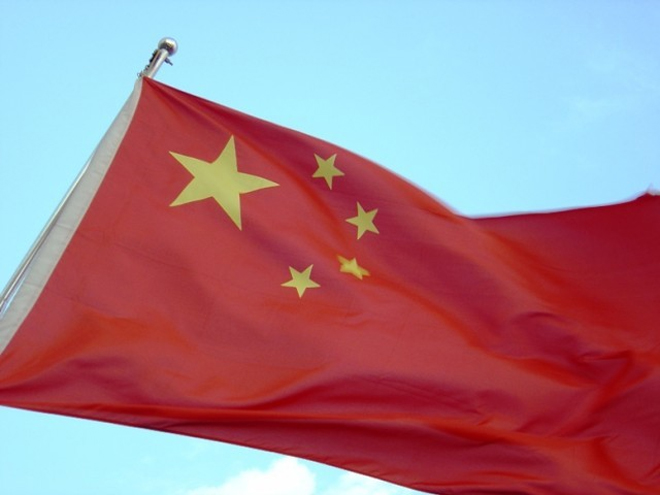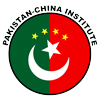The man behind the Chinese dream
Source : Pakistan Today Date : 10-01-2015
 |
Beijing has come very far in very little time
When Xi Jinping rose to prominence as President of China in late 2012, no one among international leaders even knew what shift China was going to make under him.
China under President Xi is witnessing another legendary leader who is set to change the course of history. Within a mere two-year period in office, he has already joined the club of elite Chinese leaders like Chairman Mao Zedong and Deng Xiaoping.
The world community is also taking cognizance of the revolutionary policies adopted by the new Chinese leader who has shaken up not only the entire Communist Party leadership but also the new leader has let the world know what it takes to become a true leader.
President Xi has not only started another journey towards materialising the “Chinese dream”, but he braved a campaign to clear his own party’s rank and file of corrupt elements.
In the last two years, as general secretary of the Central Committee of the CPC, President Xi Jinping ordered a clamp down on corruption, taking action against both high-profile “tigers” and low-level “flies”.
Since the “eight-point guideline” was introduced in late 2012, the government’s spending has dramatically dropped and thrifty life and work styles are becoming popular.
A number of senior officials, both in service and retired, have been investigated for discipline violations, including former security chief of China Zhou Yongkang, top Chinese military officer Xu Caihou, and senior politicians Ling Jihua and Su Rong. As many as 100,000 cadres have been punished for violating the eight-point guideline of the government, and more than 700 typical cases have been exposed.
President Xi, along with his colleagues, also conducted more than 20 domestic inspection tours across the country, covering more than 20 provinces, municipalities and autonomous regions. During these visits, wherever he went, he had chats with ordinary citizens in a bid to learn every aspect of the people’s lives, such as employment, education, medical care, housing and social insurance.
President Xi, along with his colleagues, also conducted more than 20 domestic inspection tours across the country, covering more than 20 provinces, municipalities and autonomous regions
Following Xi, the other six members of the Standing Committee of the Political Bureau of the CPC Central committee also stretched out to visit poverty-stricken regions.
During the past two years, China has kept steady economic growth. The total amount of trade in goods tops the world and its economic aggregate ranks the second with steady growth. A series of economic reforms have been made to activate the market and improve economic endogenous production.
More than 700 administrative approvals and property registration procedures have been canceled or streamlined, covering both private and state-run enterprises. President Xi introduced the “New Normal” phenomenon of the Chinese economy to the world — explaining that the economy must now go from high-speed growth to medium and high-speed growth with a continuously optimised economic structure, and from factors and investment-driven to innovation-driven.
Signs of President Xi’s new recipe have emerged. In the first half of 2014, growth rate of the services sector surpassed that of the manufacturing industry, a significant change in structural adjustment and transformation.
Another leadership decision he took was adopting the ‘look east policy’, and sharing his country’s fruits of development with immediate and secondary neighbours, in particular and the countries of the South Asia region, including friendly states like Pakistan, Afghanistan, Myanmar, Nepal, Bangladesh and Afghanistan. China has even offered to share its development with hostile nations of the region including India and Vietnam.
China has transformed its words into practical steps by opening two major trade routes in an apparent bid to expand its outreach to the Europe, US and central Asian states through Arabian Sea in minimum possible time.
The first route being established is called ‘China-Pakistan-Afghanistan-India Economic Corridor’. President Xi calls it Silk Road Economic Belt. The other route is in the east and is called China-Myanmar-Bangladesh-India sea route. China has named it the 21st Century Maritime Silk Road.
The first route being established is called ‘China-Pakistan-Afghanistan-India Economic Corridor’. President Xi calls it Silk Road Economic Belt. The other route is in the east and is called China-Myanmar-Bangladesh-India sea route
These parallel trade routes are being established with huge budgets and have no precedence in the history of China. Around 50 countries have expressed willingness to participate in the “Belt and Road Initiative” to boost common development.
Moreover, the Chinese government is also laying rail tracks with Pakistan and Afghanistan, besides laying another railway track on difficult terrains to link with Mongolia and other neighbouring central Asian states.
President Xi has taken another giant leap by extending support to the efforts to bring peace and normalisation in Afghanistan. The assistance reflects another paradigm shift in the foreign policy of China as the leadership has never involved itself in conflict-resolution directly and all Chinese leaders of past have stayed away from any such efforts.
In a recent interaction with this writer, China’s Special Envoy on Afghanistan, Mr Sun Yuxi, exploded a bomb, stating that he had held secret meetings with the Afghan Taliban negotiators more than once in Peshawar with support from Pakistan.
“China never sent guns or bullets to our neighbours. Even if turbulence in Afghanistan continued, China would never send a single combat troop to Afghanistan as we believe in respecting the sovereignty of our neighbours. Rather, wherever we go, we take development as we believe in sharing the fruits of our development. We are working with the Taliban to help them return to the political process and these efforts have been positive. So we have assured the Taliban leadership that we will said Sun Yuxi.
Moreover, besides investing $ 34 billion in energy and infrastructure building in Pakistan, China is also helping Pakistan in clearing out terrorist elements.
President Xi Jinping also introduced a new diplomatic philosophy by conducting eleven overseas trips, and meeting more than 100 visiting foreign state leaders or government heads.
Under President Xi, China is always extending a helping hand to Africa where the Ebola epidemic is lingering by dispatching about 1,000 medical workers to affected regions and provided them with relief materials worth $122 million.
